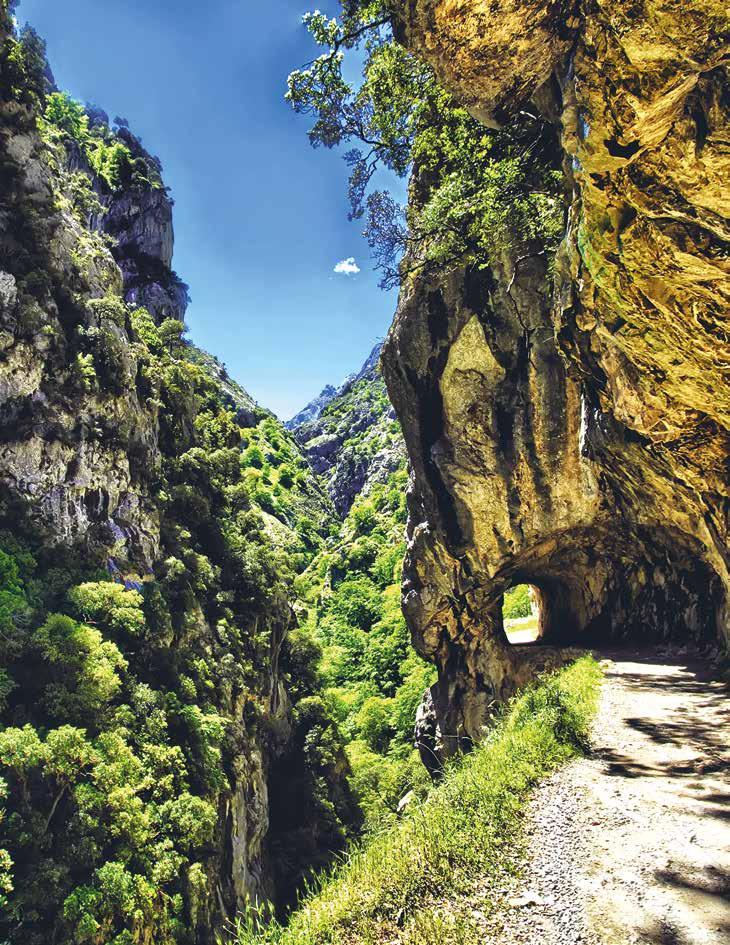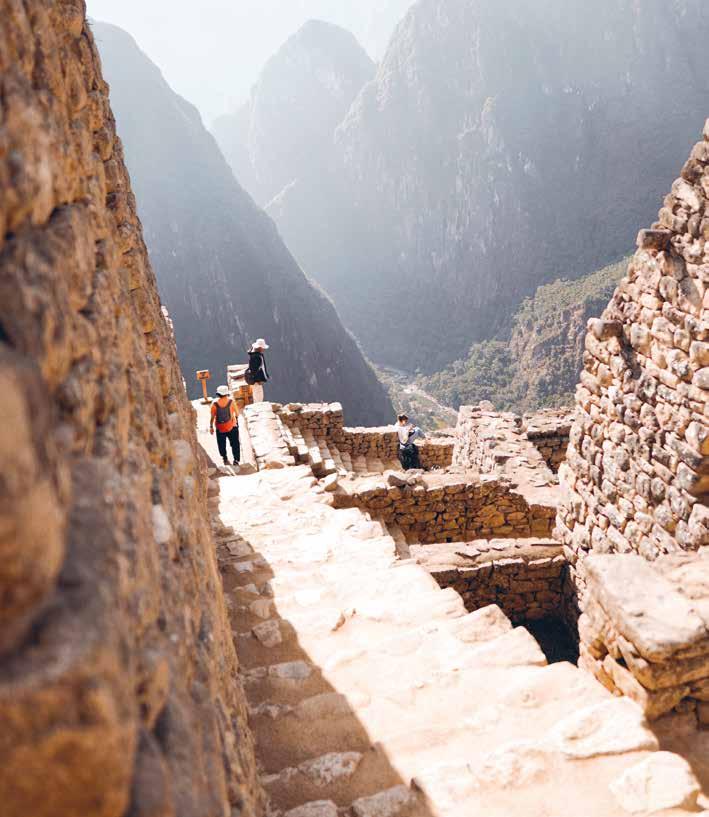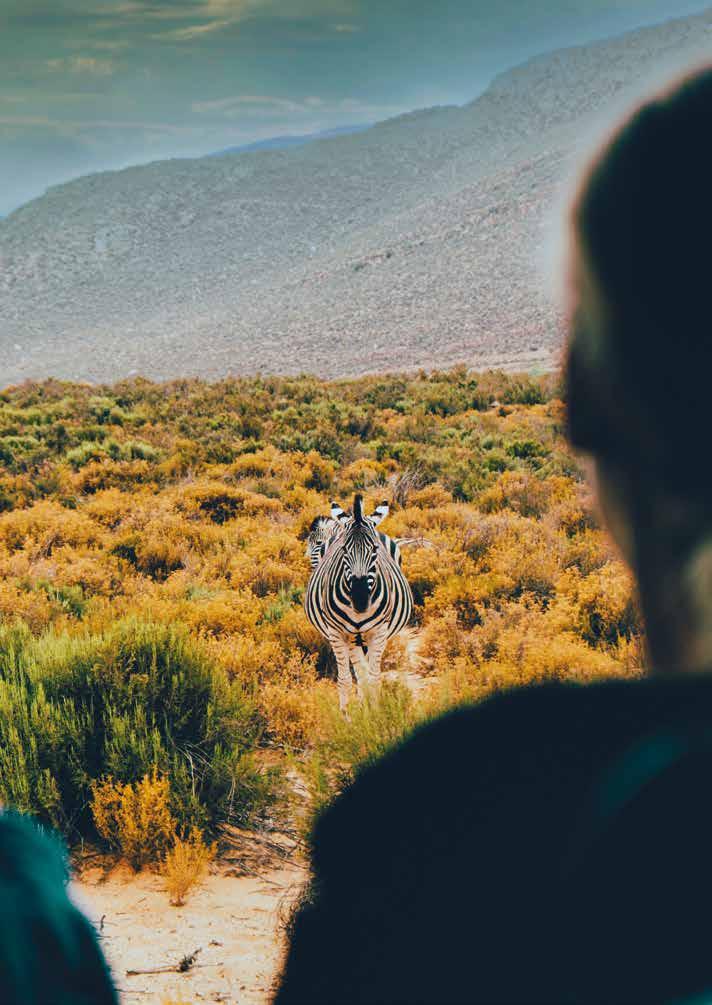

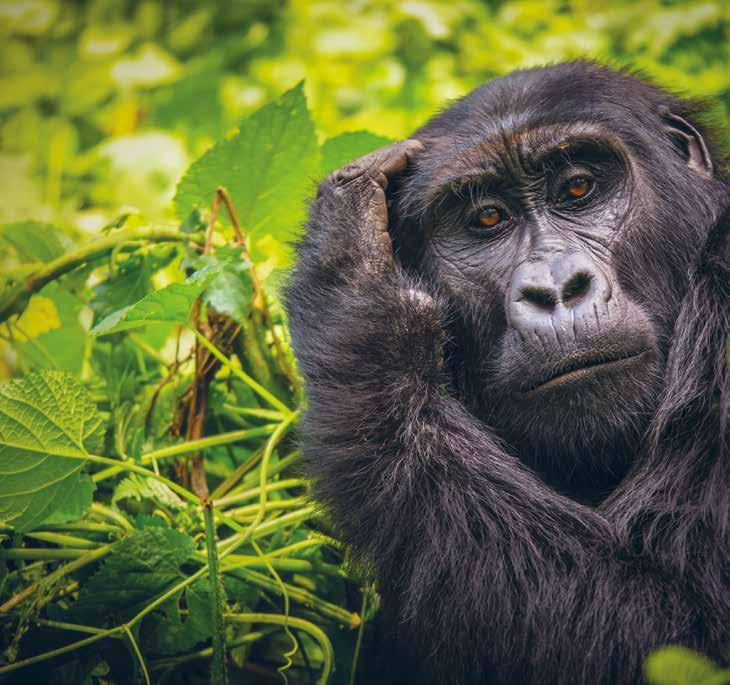




Welcome to the second issue of The Explorer ! Thanks for all your feedback on the magazine so far, we’re delighted you enjoy reading it as much as we love creating it.
Last month I was lucky enough to visit Lebanon. I’ve been longing to visit since the country reopened to visitors – and it certainly didn’t disappoint! I was reminded how much travel truly makes you appreciate and understand, at least a little better, other cultures and other people. After a few years deprived of travel, we now appreciate even more how it reaffirms the common things that bind us all together – something Emma Thomson talks about so eloquently in Seize the Day (page 4).
We always enjoy hearing about your travel stories and the joy and excitement of discovering new places or revisiting favourites with friends old and new. Reading about the friendship between Brian, Zsar Zsar and Celia (Over to you, page 38) made our hearts sing! So please keep sending us your feedback, travel stories and any suggestions for what you’d like to see and read in future issues.
Lastly, we’re delighted to launch the Explore Foundation this month. It’s something we’re extremely proud of, as a way of better supporting the communities and people in the places we travel to. You can read more about it on page 16.
Happy reading and happy travels!
Michael Edwards Managing Director, Explore Worldwide
Explore today, don’t wait for tomorrow, says travel writer Emma Thomson.
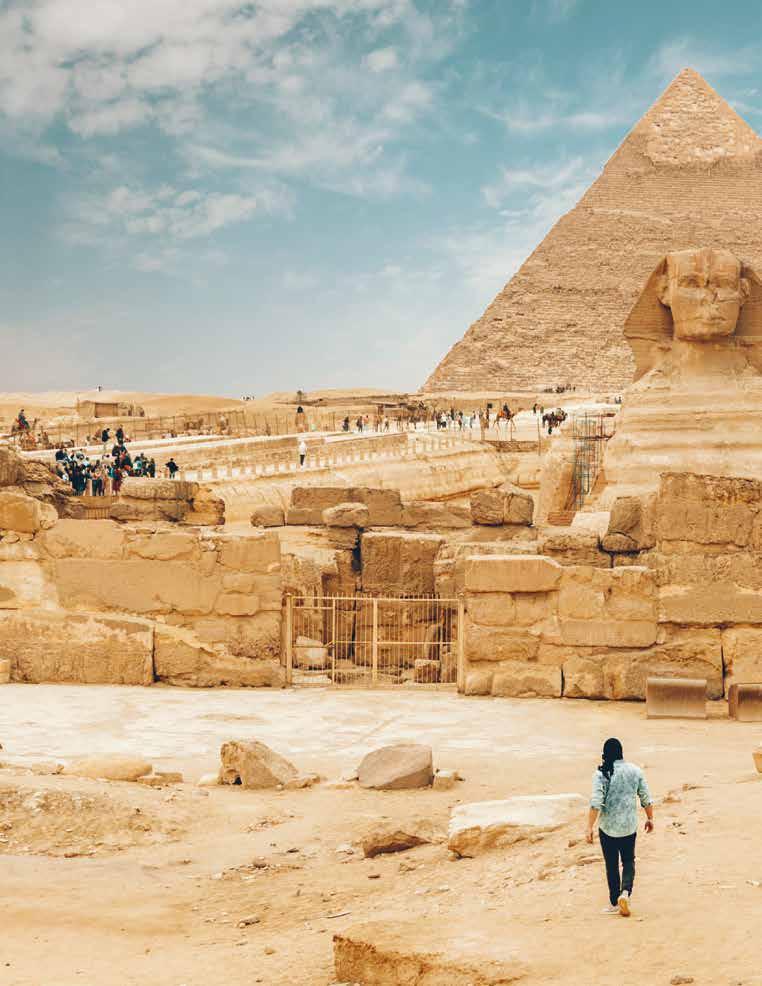
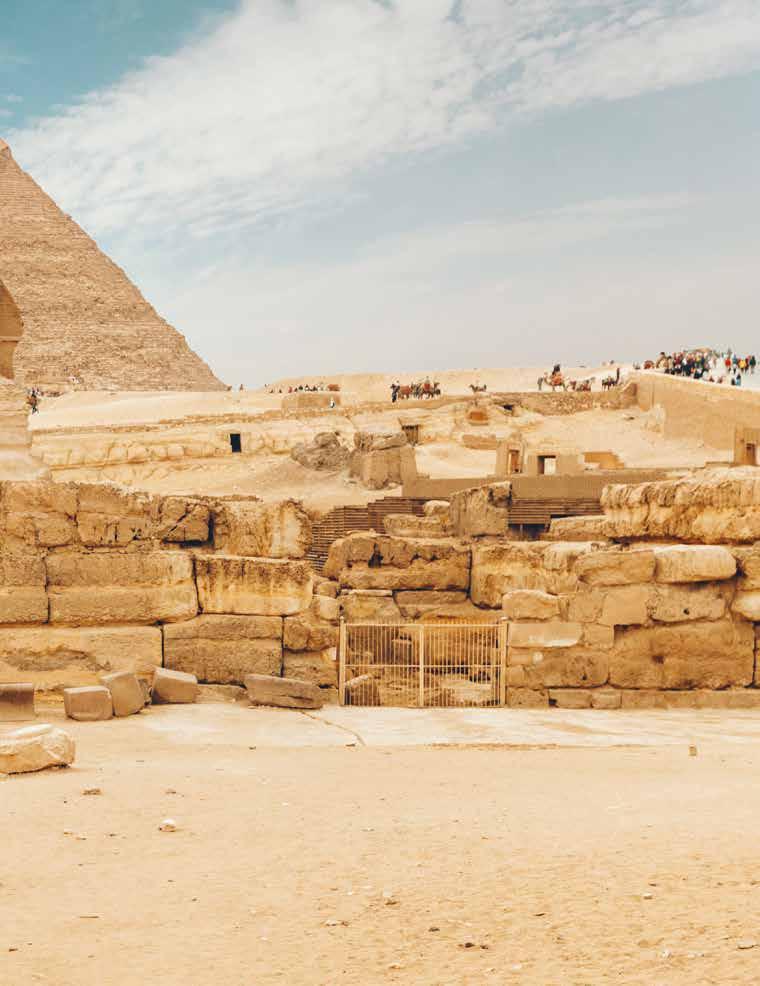
Right An unforgettable husky ride in the Canadian wilderness

Below A typical street scene in Cuba

he Sami people say you can hear the Northern Lights sing,” said our guide, Geir Notisnes, as we stood in the toe-scrunching cold. We were on a road outside a small fishing town in the Lofoten Islands, 95 miles north of the Arctic Circle. Behind us loomed a string of snow-dusted serrated peaks and occasionally the air carried wafts of fish from the town’s vast wooden racks strung with stiffening cod. We waited until the embering sun slowly melted below the horizon and night cast the snowy arc of the Milky Way and the slim crust of a new moon above us. Slowly, spectral wisps of cloud started to streak across the sky. “Here they come,” whispered Geir, reverently, and slowly the translucent wisps strengthened into dazzling ribbons of emerald silk that ran over our heads. I had wanted to witness the aurora borealis for a decade and last year I decided I’d waited nine years too long.
I know I’m not alone in being guilty of saving the epic big adventures I’ve long dreamed of to a mental ‘to-do’ list, for when I have more time, more money or am celebrating a special milestone. Phrases such as ‘I will, as soon as’ or ‘later’ easily trip off the tongue and plans get side lined. It usually takes a major event to make us take stock of what’s important in life. And the Covid-19 pandemic delivered a one-two punch of confinement and loss. It robbed travellers of their freedom, spontaneity and, in many cases, their confidence, but it trained the lens on how finite time can be and forced everyone to re-evaluate. Our imaginations had time to dream up all the places we still wanted to explore, from pacing barefoot across a sugar-white sand beach in the Maldives, to spending time in the company of elephants on an African safari. And many have emerged from the pandemic with a carpe diem attitude.
“We’ve seen a huge uptick in demand for ‘bucketlist’ and ‘once-in-a-lifetime’ type trips in the last year, unquestionably as a result of all that ‘lost’ time during the pandemic,” says Gemma Knight, Senior Commissioning Travel Editor at The Daily Telegraph. “We no longer take the ability to hop around the world for granted in the way we once did, and there’s certainly a new sense of urgency when it comes to ticking off those destinations now, rather than later,” she adds. Online, more people are searching for the ‘ultimate bucketlist’ when it comes to travel, and bookings for big ticket trips like climbing Kilimanjaro or hiking the Inca Trail are up.
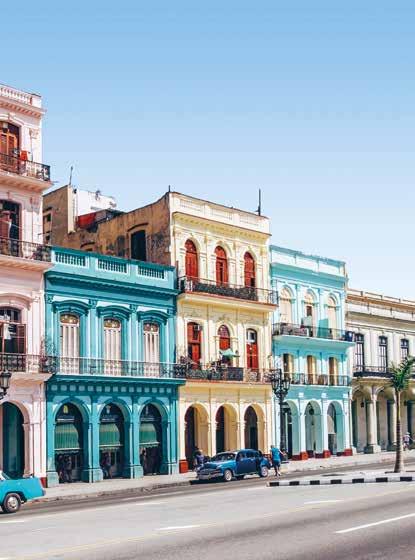
Anna Moores, Editorial Director of independent guidebook publisher Bradt Travel Guides, reports that at the Destinations travel show, held in Olympia, London, there was a real buzz. “We expected there to be a lingering sense of anxiety about travel following Covid, but it was the opposite. Many of the travellers in the more senior age bracket were booking not just one long-distance trip for the following year, but several. Everything from jaguar watching in the Pantanal to a safari in Namibia.” Bradt’s own list of travel guides also reflects travellers’ desire for
more adventurous destinations, with new titles for 2023 including Tunisia, Saudi Arabia, and Karakalpakstan in northwest Uzbekistan. This is reflected in Explore’s research too, which shows that among the top ten booked trips for 2023 were much-misunderstood Pakistan, just-open-to-travellers Saudi Arabia, and the jungles of Guyana.
We’ve also seen people become braver in their choices, more eager to push themselves out of their comfort zones and make the most of their trip – whether that’s by going it alone for the first time, opting for adventure activities, or even trying a style of travel they’d always assumed wouldn’t be for them, such as cruise or skiing.”
Explore’s research also shows a lot of people are shaking off the idea of waiting for friend and family plans to align and just doing it alone, with 67% of bookings made by solo travellers this year. Travel videographer, Harry Pope, says “While I have had some regrets about missed opportunities, the pandemic gave me ample time to reflect on my travel aspirations and create a bucketlist of places I wanted to visit once travel re-opened. Among my top destinations were Japan, Greenland and New Zealand and I’ve since been fortunate enough to embark on a trip to Greenland – it far exceeded my expectations. I wasn’t expecting its natural beauty to blow my mind as much as it did and mushing huskies across the pristine snowy tundra is something that will stay with me forever.”
“We no longer take the ability to hop around the world for granted in the way we once did”
Most poignantly, the research also shows that many senior travellers regret not visiting long-haul destinations while they could still manage the flights, such as United Kingdom, Italy or South Africa. Their biggest regrets? Not seeing the mysterious Great Pyramids of Giza, the otherworldly ruins of Machu Picchu, Japan’s riot of springtime cherry blossoms, sailing among the glacier-licked fjords of Norway, or getting their kicks driving Route 66 in the USA.
So, the moral of this story is that if you’ve penned your bucket list, don’t wait to start ticking it off! In the words of Mark Twain: “Twenty years from now you will be more disappointed by the things you didn’t do than by the ones you did do, so throw off the bowlines and sail away from the safe harbour.” Within a few weeks you could be sharing a bowl of ropa vieja on a Cuban homestay or standing in the misty rainforest of Uganda, eye to eye with a mountain gorilla.
Emma Thomson Travel journalist, writer, and author @emmathomsontravels
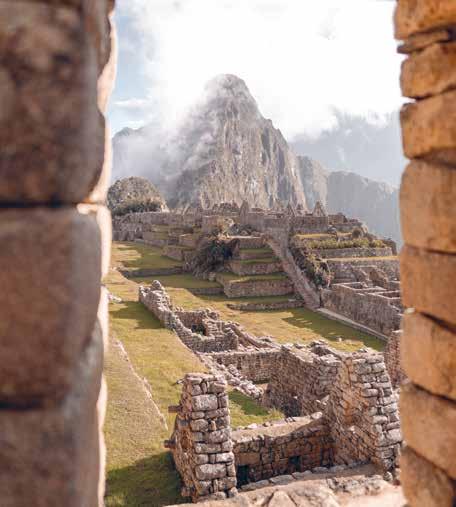
We’ve recently undertaken a study that allows you to compare your travel history with Sir David Attenborough’s to reveal how you measure up in comparison to the greatest travel documentarist and wildlife advocate of our time.
Our survey participants also indicated the places they would like to visit next. Their top wish-list destinations are:
Madagascar
A land teeming with exotic wildlife, contrasting cultures, verdant rainforests and friendly local people. Wake up to hear the echoing call of indri lemurs at sunrise, marvel at the towering baobabs and experience the mighty canyons of Isalo National Park.
Japan
Japan is a diverse and alluring country, full of surprises at every turn. Get into the heart of Japanese culture with a stay in a Buddhist temple or family-run ryokan, observe snow monkeys bathing in the hot springs of Jigokudani Onsen and whizz across the countryside on a bullet train to explore the city of Hiroshima.
Iceland
No wonder this country comes up as a firm favourite. No other place compares to Iceland’s unique combination of snow covered glaciers and steaming geysers. Visit in winter and get a chance to experience the northern lights or go in summer for wildlife favourites like puffins and whales.
Looking for some more bucket list destinations? Visit: exploreworldwide.co.nz/ bucketlist
“Twenty years from now you will be more disappointed by the things you didn’t do than by the ones you did do”
1
PAKISTAN
For trekking enthusiasts, Pakistan offers the chance to explore the less-visited western area of the Himalayas. Discover the show-stopping scenery of the Karakoram Mountains with lush valleys, creaking glaciers and some of the highest peaks in the world. Meet local people along the way and take the opportunity to try some regional specialities such as Mamtu which are delicious stuffed dumplings or Buttering Daudo, a traditional apricot soup.
2
GUYANA
As the only English-speaking country in South America, Guyana is a melting pot of cultures – having been influenced by the British and Dutch, as well as people from Africa, India and nine indigenous tribes. If you’re looking for a place that is truly off the beaten track, with masses of lush rainforest, incredible food and lovely people, then the ‘land of many waters’ is the place for you.
Some destinations instantly evoke a picture – say Maldives and we’re at a sandy beach with turquoise water or Canada and we’re thinking vast forests and bears. But then there are those hidden gems, the places that you can’t get a grasp on… until you go and discover them.
3 BELIZE
When thinking about wildlife destinations in Central America, tiny Belize may not immediately come to mind, but we think it should! Home to the world’s first jaguar reserve, the second largest barrier reef system in the world –the Great Mayan Reef –and over 580 bird species, Belize really is a diverse pocket of overlooked beauty.
4 TOGO
This West African nation still widely uses traditional healing methods and holds animist beliefs. This means you have the opportunity to see authentic voodoo shrines, fire dancing and local ceremonies. Combine all this with the country’s unique traditional dwellings – including the Nok caves used to evade 18th century slave traders and unique mud towerhouses with several floors, called Takientas – and we think you have an absolute winner of an adventure holiday on your hands.
5
KYRGYZSTAN
This relatively unknown Silk Road country is dominated by unspoilt mountain ranges, vast grassy pastures and spectacular alpine lakes. Did you know that it also has a traditional yurt-dwelling culture that’s remained unchanged for centuries?
“Meet incredible locals along the way...”
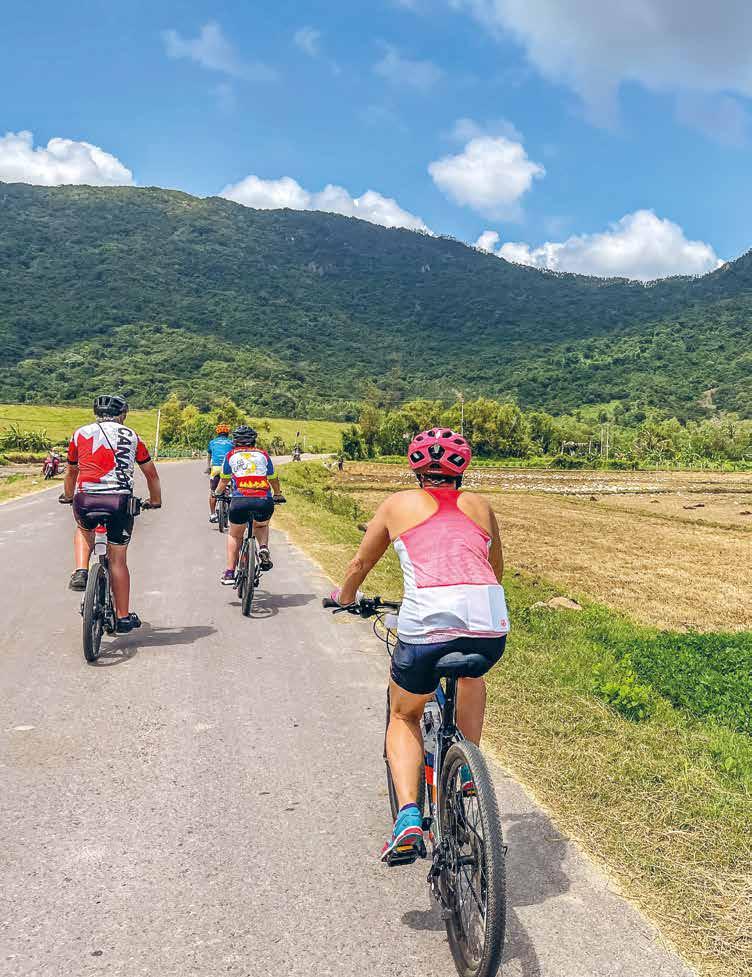
Vietnam conjures up images of breathtaking landscapes, culinary magic, vibrant cities, and crazy traffic. So, when Sarah Stead got the chance to explore one of her must-visit destinations by bike, did she hesitate? Absolutely not. Here’s why.
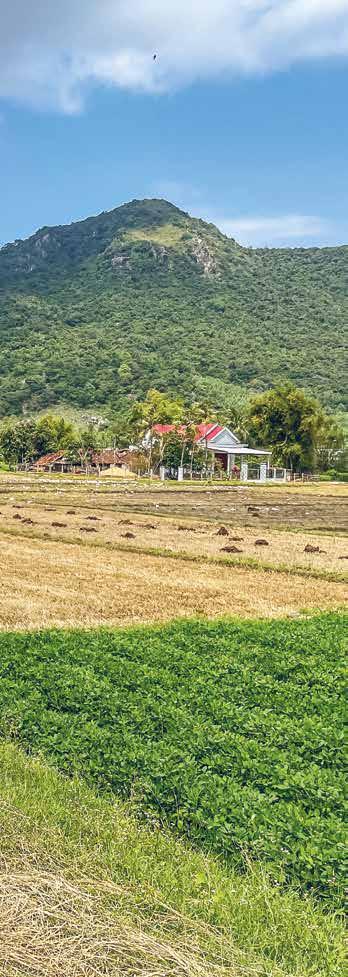
Confession number one: I often follow my stomach around the world. One of the main reasons I was so excited about visiting Vietnam for the first time was because I knew the food was going to be amazing. I also wanted to see as much of the rural heart of the country, as I did of the frenetic bustle of its cities. A cycling trip made absolute sense. I could experience the real Vietnam from handle-bar height and work up a good appetite at the same time. Win-win!
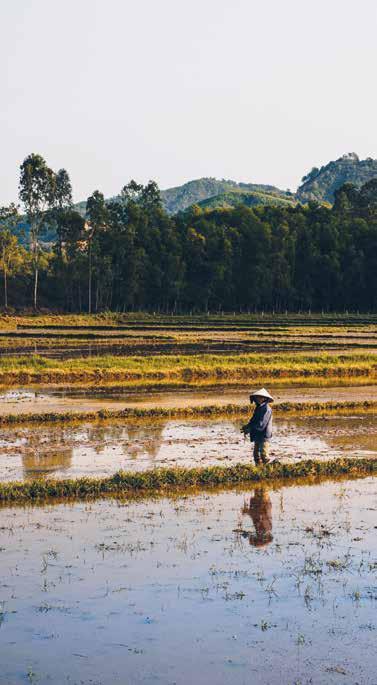
The trip I chose was a two-week north to south tour, from Ho Chi Minh up through the Central Highlands to Hanoi, via tropical islands, verdant forests, Vietnam’s longest sea bridge, the mountainous Hon Giao pass and a sleeper train. Confession number two: I chose an e-bike.
First things first. The cycling was a revelation. I chose an e-bike as although I have a good base level of fitness, I hadn’t cycled in a few years and wanted to make the most of the rides, stop and take photos and still be able to catch up with the group. The trip was graded ‘moderate’, a happy
“I know that I couldn’t have had those incredible experiences were we not seeing it, and living it, from the saddle.”
medium between challenging and leisurely. Whilst I did have to put in the effort, with the help of the e-bike I made it to the top of the more challenging rides with a feeling of accomplishment and having enjoyed myself, rather than slogged up a hill.
Arriving in Ho Chi Minh at the start of the trip, my first impression was the noise of the horns; apparently there are nine million mopeds in the city, also known as Saigon. Pavements and roads are jam-packed, it’s a modern city, but clean and tidy and an ideal base for the first few days. There we met our local guide Hoan, who took us on a walking tour of the city – the perfect introduction to the country – and the food. He led us through the bustling streets of the Old Quarter before we headed to a restaurant, my first opportunity to taste the local cuisine! I was not disappointed. The flavours of my beef and vegetable stir fry were so different from Thailand. We often make the mistake of lumping all Southeast Asian food together, but the spices are different – not just heat-wise, but in flavour. The produce is so fresh, it was better than anything I’d had at home. I had the best
pineapple I’d ever had too; perfectly sweet, juicy, and refreshing. It was soon to become my favourite way to hydrate on our cycling stops.
Over the course of the first few days, we’d head out of the city early, to avoid traffic and the heat of the day. Cycling was a brilliant way to see how the country changed even within small pockets of countryside. On one of our first rides in the Mekong Delta, we stopped to watch as coconuts were harvested, buying them to crack open so we could drink the water before eating the delicious meat. We were in the moment, enjoying the fruits of people’s labour, knowing we were supporting the local community. It was a great introduction to the rural Vietnamese people too; while cycling, people were swinging on hammocks at the front of their houses, waving hello as we passed by.
Soon we left the city of Saigon behind us, our rides each day getting a little longer and a little more challenging as we made our way through the highlands. However, it barely felt like exercise when cycling somewhere so beautiful! It was easy to talk to others in the group, keep an eye out for points of interest and I rarely broke into a sweat (at least from the exercise!). In between rides, we always had downtime and rest days, walking tours, trips around the local towns and museums, so we never felt rushed.
On day five we cycled the Hon Giao pass to Nha Trang and I was grateful for my e-bike decision. Hoan explained that there was only one road and, as we couldn’t divert off it, we could take the road on at our own pace. At points I was by myself because I’d stopped to take photos. Then I’d turn my e-bike on and catch up with someone for a chat, enjoying the views of the foothills and stopping for sweets to keep me going. The landscape was so varying, with villages and forested areas that changed from pine to almost jungle-like forest filled with different birds calls.
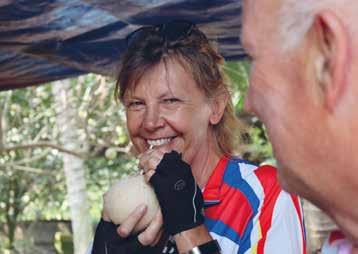
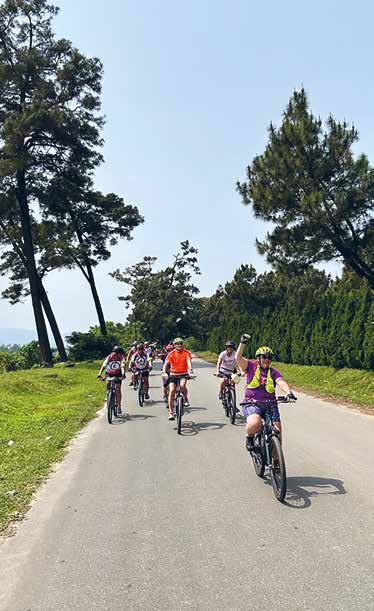
“People were swinging on hammocks at the front of their houses, waving hello as we passed by.”
Then there’d be a roadside stall, lush countryside, and rice fields. At the top the whole group shared a real sense of euphoria. Only heightened by the most exhilarating downhill ride I’ve ever had. The vast scenery opened up before us and we just took it all in. That day especially the beer at lunch felt very well-earned!
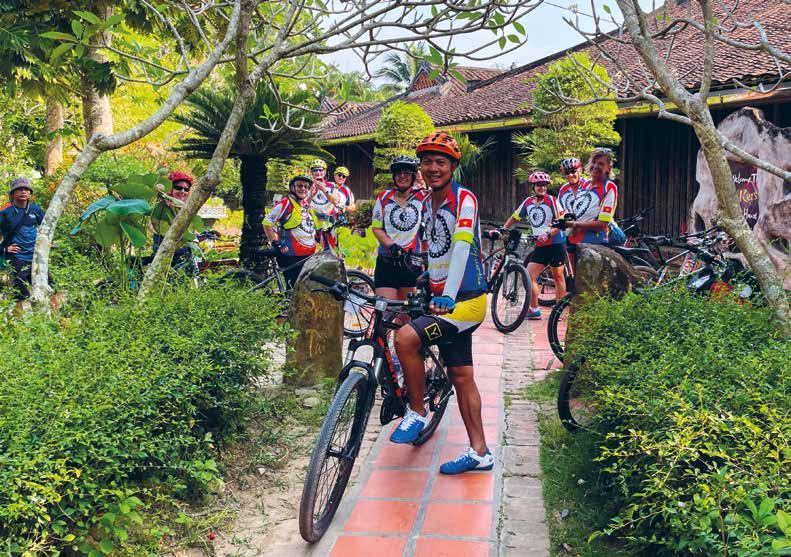
We met friendly people all along the journey, and in the most unusual places. At the site of the Mai Lai Massacre, in the museum, children from the local school were visiting and despite the immense sadness of the place, they came over to talk to us – full of questions and keen to practice their English. It really showed the resilience and openness of a people, who acknowledged the past they’d experienced but embraced the opportunities of the future.
In Hoi An, the influences of Vietnam’s multicultural past are everywhere. On a walking tour with Hoan, we visited an old Japanese house, where we watched artists hand-stitching beautiful intricate scenes before heading to the ornate and fragrant Chinese Temple. Wandering the streets, there were colourful paper lanterns hanging between the buildings, intertwined with floral vines. By day, these were bright and eye-catching, by night, utterly spectacular.
With the big rides behind us, we headed north. This involved a 13-hour overnight train to Hanoi, a part of the trip that had been daunting me. But it was fabulous – a mini-adventure that turned out to be great fun and a real highlight! I bought a bao bun, which was light and delicious and the group sat in one of the cabins, sharing some beers and reminiscing about the journey so far. None of us got much rest on the train but as the next stop was a relaxing one, it didn’t really matter.
We spent just over a day in Halong Bay on a lovely junk boat, eating mango and chilli salad, fragrant rice with sauces and spring rolls. We even had a summer roll making masterclass on the top deck of the boat. With such fresh, light food available everywhere, I didn’t feel guilty taking second helpings, especially since cycling gives you a good appetite. Another couple of highlights of our time at Halong Bay included racing kayaks around a lagoon in the middle of limestone cliffs and climbing to a viewpoint to see the sky change over the islands before sunset.
Our last stop was Hanoi. I wandered around the picturesque Old Quarter, with long vines, and colourful floral trellises trailing down the buildings – a real concrete jungle! – and reflected on my adventure. Our days had started early, but I’d noticed that people were already out exercising too, running on the beach, swimming, and working out in outdoor gyms, with every generation coming together to keep fit. It’s a real lifestyle attitude they have, there’s an emphasis on physical and mental wellness that is so inspiring and interesting to see, especially when
“It’s just so vibrant, as though someone’s turned the saturation up”
it seemed like the whole population was getting involved. It’s reflected in the food too – so healthy, and ideal for fuelling our days in the saddle.

Another thing that will stay with me about Vietnam is the colour – it’s just so vibrant, as though someone’s turned the saturation up. But it was the cycling that had exceeded all my expectations. Even when riding on busier roads we were well taken care of: Hoan made it so easy to navigate something so different from what we’re used to at home (I’ve never had to dodge a chicken before!), cutting a line with the mechanic at the rear, so we always felt safe.
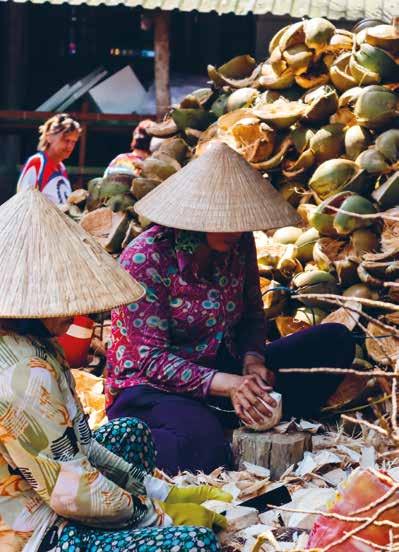
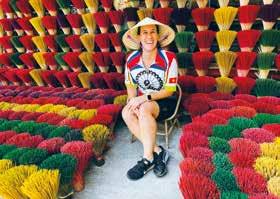
1
If you buy no other item of cycling clothing, this one is a must. The padding makes any length of ride, be it short or long, much more enjoyable and lets you really focus on the scenery. As an option (or for extra cushioning) add a padded saddle cover.
2
If you don’t have a cycling top with pockets already, a bumbag is great; plus it’s useful for more than just cycling. You’ll have somewhere secure to keep essentials, like money, phone, suncream, tissues and hand gel.
3 Helmet
It might seem like an obvious packing item for a cycling trip, but safety absolutely comes first! That’s why you always need to take your own helmet so you can ensure the right fit and comfort.
4
Whether rain, shine or just plain overcast, glasses are very helpful. They can stop the wind, dust and rain getting in your eyes. Some sports glasses even have changeable lenses for different weather conditions.
5
A water bottle that won’t rattle or fall out of your bike’s bottle cage is essential as hydration is key when riding. To keep your hands on the handlebar, use your filtered Water-to-Go bottle to fill up a wearable hydration backpack to drink on the go and keep your essentials in one place.
Let the Explore team tell you what they’ve been up to recently. New partnerships, new places, new faces – you heard it here first!
As a registered charity, the Explore Foundation will be managed by an independent Board of Trustees, yet it benefits from Explore Worldwide’s huge community of overseas partners and contacts. Through this network the Foundation will identify and champion grassroots projects in countries that Explore customers visit all over the world, working to deliver support where it’s most needed.
Our mission is to improve the lives of communities worldwide, by supporting projects that target poverty reduction, increase access to education and healthcare, and promote conservation. Explore will make a donation to the Explore Foundation on behalf of every single customer that travels with us, allowing the Foundation to continue supporting projects that create a positive impact on people, places and the planet.
To launch the Explore Foundation our trustees have chosen to support an initiative that has been close to Explore’s heart for many years, Lone Buffalo in Laos. Here’s a quick introduction to who they are and what they do…
Lone Buffalo is a youth education and development project in Laos, set up 12 years ago by Mark Steadman, an Explore Tour Leader.
Lone Buffalo’s mission is to provide free English tuition to students, to enable easier access to higher education and employment opportunities, increasing prosperity and bringing sustainable resilience to the area.
In addition to English tuition they provide a life skills programme called Develop Together (DevTog) which gives up to 100 students access to 25 workshops ranging from financial literacy, to child rights and gender equality, and basic fitness principles. It’s a varied programme that gives students practical skills they can use in different areas of their life. It’s this initiative that the Explore Foundation will be supporting, funding the DevTog 4 programme that begins in September 2023.
The DevTog programme costs $30,000 a year to operate and the Explore Foundation is donating this amount in full. This means Lone Buffalo can focus on delivering a great range of workshops to best help the students.
“It means everything! The programme has become part of our culture at Lone Buffalo and it’s important we have the support to continue each term. It’s really changing young people’s lives, developing confidence, creating leaders and getting young people into tertiary education.”
Mark Steadman, COO of Lone BuffaloIf you’d like to support Lone Buffalo, you can donate at explore-foundation.com. As little as $40 can fund an interactive textbook that a student can use to support their English lessons. Explore Worldwide covers all administration costs for the Explore Foundation, so 100% of your donation will go directly to supporting the projects.
For more information about the Explore Foundation and its exciting projects visit explore-foundation.org
*The Explore Foundation is a Charitable Incorporated Organisation (no. 1201356) registered by the Charities Commission in England and Wales.It’s time to tell you a little secret. Over the last few months, we’ve been working on an exciting new project – now that it’s ready, we are thrilled to announce the launch of the brand new Explore Foundation*!
“We’re delighted to be helping young people from rural areas of Laos to access leadership and life skills training that will improve their chances to gain places at college and university whilst also preparing them for adult life”
Jo Hendrickx, Explore Foundation Trustee
We’re proud to be part of the Feefo sustainability awareness solution, powered by ethy.
Explore operates with purpose. We’re a responsible business that cares for our staff, our partners, our customers and our planet. We know operating in this way is a journey; we’re not perfect, we’re just working hard to improve a little each and every day.
So we’ve welcomed an independent audit with Feefo, our trusted review provider, in partnership with ethy, a company established to make it easier for consumers to find ethical, sustainable businesses.
Using a verification system based on the UN Sustainable Development Goals, and requiring evidence to prove
An essential part of South African culture, the braai brings family and friends together for almost any celebration. When we spoke to Graeme Anderson, Explore Tour Leader in South Africa and Eswatini, he was only too happy to share his secret braai marinade.

MARINADES MEAT FOR 2-3 PEOPLE. Best with fillet but you can use on any beef or chicken.
Ingredients
A generous 2–3 squirts of sweet chilli sauce (Graeme recommends Wellingtons, but any will do)
A dash of Cola (not too much) – 25–50ml is perfect
1 tbsp of paprika
1 tbsp of basil
1 tbsp of dry chilli spice (not too hot, it’s to give flavour, not heat)
A pinch of salt
Method
1. Mix all the marinade ingredients together.
2. Cover the meat with the marinade.
3. Leave to marinade for at least 1 hour, but the longer the better.
4. Cook the meat over an open flame.
commitment and action before awarding a trust mark, they strive to help consumers make informed choices and prevent greenwashing. We’re holding ourselves to account and ethy is helping us to back up our sustainability claims. It’s important for us be honest with our customers about where we are on our journey –communicating our successes and where we need to work harder. So using ethy to independently verify our actions is an important additional step in our sustainability journey.
Find out more and see our ethy verified ecolabels at exploreworldwide.co.nz/ethy

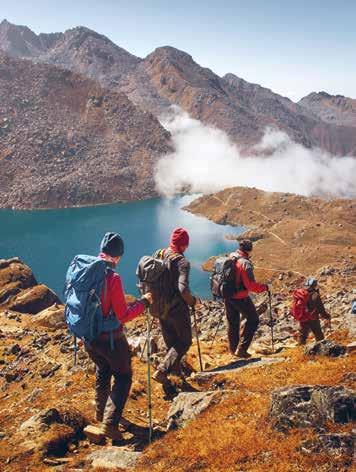
“Using independent people to verify our actions is an additional step in our ethical and sustainability journey.”
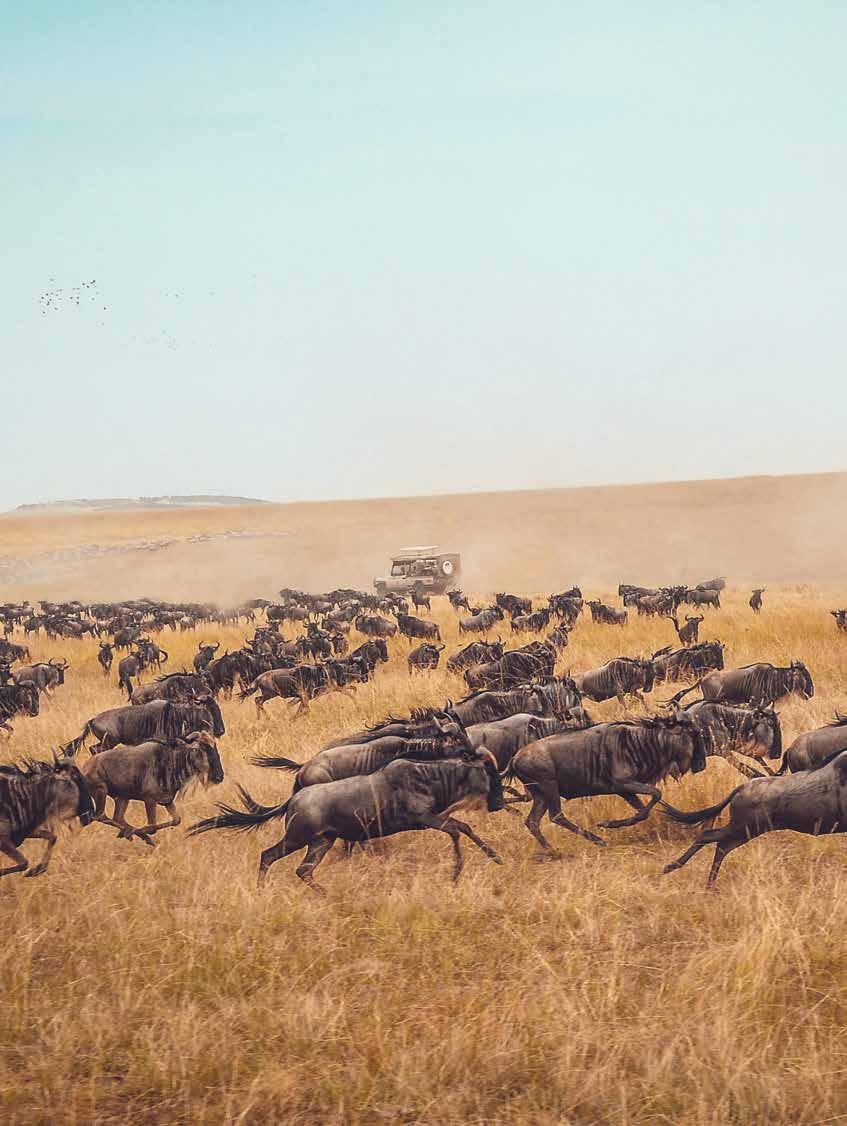
An African safari is a one-of-a-kind adventure that will leave you yearning to return. Whether you’re a first-timer or a wildlife veteran, there are many options to explore. We asked travel photographer Graeme Green to share his safari knowledge of the continent that stole his heart.
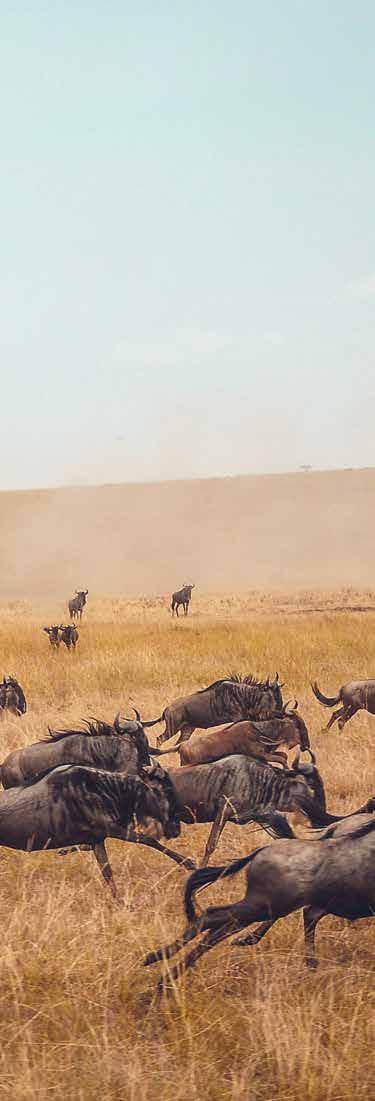
No other continent has such spectacular wildlife”, says Sir David Attenborough. And it’s hard to argue. From the open savannahs to lush rainforests, the diverse wildlife across Africa is remarkable, beautiful, and endlessly fascinating, with all kinds of creatures great and small making up the tapestry of life. But with so much on offer, selecting the safari adventure that suits you best increases your chances of magical wildlife encounters you’ll remember for a lifetime.
Thanks to the nature of my work, I’ve been lucky enough to experience more than my fair share of wildlife trips. Every safari has given me something new, unexpected and unforgettable.
It’s impossible to cover it all, but here are just some of my suggestions for how to choose an adventure like no other.
Words –– Graeme GreenWith more than 1,100 different species of mammal found in the continents’ 54 countries, it’s not surprising that Africa has a powerful hold over the imaginations of wildlife lovers. The presence of such iconic animals, from the noble lion and stealthy leopard to the mighty mountain gorilla,
means there’s never a shortage of drama. But there’s more to African wildlife than the charismatic giants. There are more than 2,600 species of bird found in Africa, from ‘living dinosaurs’ (shoebills) to luminous bee-eaters, living alongside alien-like rock agama lizards and odd-looking lemurs found nowhere else on the planet.
A safari will never disappoint, but for first-time visitors to Africa (and families travelling with children), there are some ‘classic’ destinations with a high likelihood of memorable wildlife encounters.

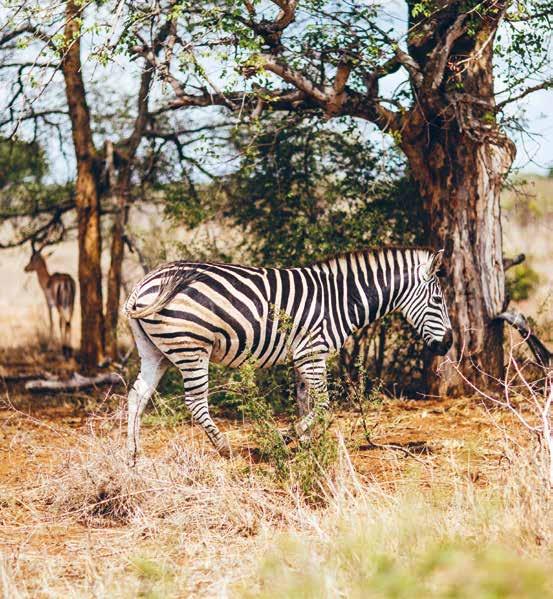
One of the big ‘classic’ parks is Kruger National Park in South Africa. Kruger is a vast wilderness, home to over 140 mammal species, as well as over 500 bird species and a diverse range of scenery from riverine forest and savannah grasslands, to mopane woodland and prickly thorn thickets. It is renowned for abundant wildlife encounters. If you get to a waterhole before dawn you may see buffalo and antelope drinking and a giraffe grazing on the canopies of acacia trees. Some other species you might see include elephants, lions and maybe even a leopard, cheetah or white rhino.
The Okavango Delta in Botswana is also legendary, a watery wilderness that’s one of the best places in the world to see herds of elephant (especially in Chobe National Park), as well as rare African wild dogs, and more, which you can observe from a safari vehicle or mokoro (canoe).
Kenya also has Samburu National Reserve, fantastic wildlife with a gentler pace than some of the better known parks in Kenya, Lake Nakuru, a haven for flamingos, and Amboseli National Park for up-close encounters with giant ‘tusker’ elephants and snow-capped Mount Kilimanjaro, across the border in Tanzania, for a backdrop.
Serengeti National Park in Tanzania is another classic, a World Heritage Site whose vast plains are teeming with lions, elephants, cheetahs, leopards, giraffes, and more.
At Ngorongoro Crater, also in Tanzania, you can descend into the massive caldera of an ancient volcano, looking out for lazing lions, lumbering rhinos and galloping zebra. Lake Manyara makes a gentle introduction to the country, with tree-climbing lions and massive flocks of flamingos, while Tarangire National Park has majestic baobab trees and one of the country’s largest concentrations of elephants.
Above With a good camera lens you can get close up shots without disturbing the animals Right A zebra in South Africa Page 18With African safaris, as with so many travel adventures, it often pays to dig a little deeper. For most travellers, one visit to Africa will never be enough. Getting off the beaten track on subsequent trips, away from the most popular wildlife locations, is likely to lead to fascinating and unique discoveries. These lesserknown gems are some of my personal favourites for capturing wildlife with a more authentic feel.
Ruaha National Park is a remote wilderness in Tanzania, the largest protected area in East Africa. It’s one of my personal favourites for wildlife photography, where I’ve spent time with elephants, lions, cheetahs, and leopards, as well as lovely lilac-breasted rollers and bright blue and orange rock agamas –all with far less crowds and a more authentic feel than Africa’s best-known parks.
The Makgadikgadi Pans, another personal favourite, is a vast desert area of white salt pans, where you can catch a sunrise with inquisitive semi-habituated meerkats as they warm their bellies in the morning sun, and spot wandering ostriches, lions, and springboks. I’d also recommend learning about the desert with indigenous San bushmen and visiting the baobabs on the remote granite outpost Kubu Island.
Etosha National Park in north-west Namibia is popular with photographers for plentiful wildlife, from leopards to elands, and magical light across the arid, desert landscapes. Intrepid explorers can drive a 4X4 down the Skeleton Coast and explore the country’s red deserts, including the petrified trees on the salt pans of Deadvlei and Sossusvlei.
Malawi is unlikely to be many people’s first-time venture into Africa, but wildlife is thriving in the country’s little-known parks and reserves, especially Liwonde National Park and Majete Wildlife Reserve, with restored populations of black rhino, elephants, lions, and more, and an easygoing lesscrowded feel than Kenya or Tanzania’s major parks. Nyika National Park, the largest and oldest of Malawi’s national parks, in the north, is certainly one for adventurers: a wild, highlands area of grasslands and wooded valleys with leopards, roan antelope, elands and more than 400 bird species.
But there’s more to African wildlife than safaris. The isolated island of Madagascar in the Indian Ocean, off the coast of East Africa,

has developed distinct ecosystems and wildlife over millions of years, with 90 per cent of the island’s animals and plants endemic and not found anywhere else on earth, including ring-tailed lemurs, leaping Verreaux’s sifakas, and otherworldy aye-ayes.
One of my golden memories is sitting amongst dozens of gelada monkeys, also known as bleeding-heart monkeys, as they fed, groomed and played on the high plateau of Ethiopia’s rugged green Simien Mountains National Park, the area also home to Walia ibex and lammergeiers (bearded vultures), which soar over rugged peaks. There’s more remarkable creatures in Bale Mountains National Park, in south-east Ethiopia, including endangered Ethiopian wolves and spiral-horned nyala.

“Catch a sunrise with inquisitive semi-habituated meerkats as they warm their bellies in the morning sun”
If you’re a twitcher, your criteria for what you want to see and where you want to go is likely to vary from other wildlife enthusiasts. As any true bird lover knows, it isn’t always about numbers, but finding a rare or remarkable species. You’ll be pleased to hear that Africa will not disappoint.
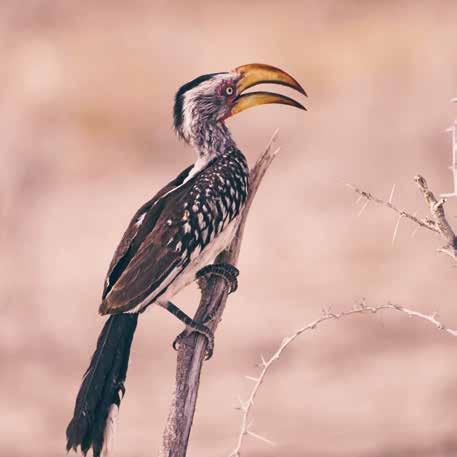
With an abundance of water, there’s no shortage of life across the Okavango Delta, and that includes birds. Botswana’s recorded more than 600 different bird species, with many of the resident or migratory species found in the delta waterways, including carmine bee-eaters, storks, malachite kingfishers, and, the world’s heaviest flying bird, the kori bustard. The Moremi Game Reserve on the eastern side of the Okavango Delta provides especially good bird watching on its lagoons.
I was impressed by the spectacular bird-life at Selous Game Reserve in Tanzania, which has more than 350 species, from fish eagles to noisy Hadada ibises, and with grey herons hitching rides across calm silvery lakes on the backs of hippos.
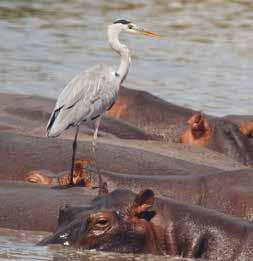
For a bright pink spectacle, head to Lake Nakuru in Kenya or Lake Natron to witness thousands of flamingos – poetry in motion. If you’re looking for more unusual species, north-east Zambia is home to the prehistoriclooking shoebill, a large ‘living dinosaur’ with a massive bill. Bangweulu (meaning “where the water meets the sky”) is the place to go, recognized as a globally important wetlands and birding area, with more than 400 bird species, from pygmy geese to wattled cranes. You have a good chance of seeing shoebill chicks in nests from July to September.
Up in north-west Africa, Djoudj National Park in Senegal is one of the world’s most important bird sanctuaries. The colossal wetlands are vital for millions of migrating birds, including white pelicans, purple herons, African spoonbills and other species that come to rest, feed and breed, doing their best to avoid the jaws of big crocs in the waterways.
The Saloum Delta, also in Senegal, is another renowned birding hotspot and conservation area, with around 200 species, including ospreys, spoonbills, and sky-filling populations of Royal terns, often viewed from a peaceful pirogue boat out on the water.
The golden rule on safari is that the animals come first. It may be tempting to edge closer or to join a crowd of vehicles around a special sighting, such as a lioness and her cubs or a marauding leopard, but it’s wrong to cause wild animals stress, fear and anxiety, and it can harm their health and safety, especially nesting birds or animals with infants. Observe, but don’t disturb. In some national parks, there’s been a spate of foolish behaviour, including people reaching out to stroke passing lions, allowing cheetahs up on roofs or inside vehicles, and getting out of vehicles to take selfies with giraffes and elephants, even if big cats are nearby. For the animals’ sakes and your own, always be sensible and act safely. Follow the advice of local guides and drivers at all times. Photographers should remember that a photo isn’t worth risking an animal’s health and happiness, or their own safety, for. Keep your distance, and if any animal is surrounded by vehicles or looks uneasy, move further away.

By visiting many of the parks, reserves, and conservancies across Africa, you can help support wildlife conservation and the local people who live nearby. I’d always recommend choosing trips where your money supports local jobs, and helps fund schools, health clinics and conservation efforts. Some wildlife trips even offer you the chance to get directly involved, such as tracking and tagging rhinos, or monitoring animal populations.
One of the world’s most unforgettable wildlife experiences is to get eye-to-eye with mountain gorillas, observing the powerful silverbacks and their families, including tumbling infants, as they feed, groom, and relax in their rainforest home. Mountain gorillas are an inspiring conservation success story. Previously thought likely to go extinct, their numbers have steadily increased, with 1,063 gorillas counted in the most recent 2018 census. The IUCN has relisted them as Endangered, rather than Critically Endangered. That’s down to conservation efforts, much of which is funded by gorilla tourism, which also benefits local communities living alongside the gorillas’ habitat.
Rwanda and Uganda are the places to find gorillas, with safety issues currently in the Democratic Republic of Congo.
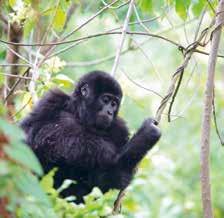
Also in Rwanda, African Parks is helping revive Akagera National Park, a wetlands area, where reintroduced white and black rhino, lions, leopards, and more than 100 elephants are doing well in the park that was previously on its knees. The same goes for Nyungwe National Park which now has chimps and 12 other primate species, as well as forest and canopy walks, and more than 300 bird species.
The two restored parks create a circuit for tourists visiting Volcanoes National Park’s gorillas.
Perhaps Africa’s greatest wildlife restoration project though, is Gorongosa National Park in Mozambique. Wildlife was decimated during the country’s civil war, but, after a major conservation effort began in 2008, there are now more than 100,000 animals in the forested hills and open savannah, including reintroduced lions, elephants, African wild dogs, and hyena, as well as reforestation projects and sustainable agriculture, such as coffee.
There’s no doubt that the African wilderness is unlike anything you’ll have ever experienced before. Your first sighting of a wild animal, and the many sightings that follow, will stay with your forever. An African safari is a once-in-alifetime experience that is likely to become the habit of a lifetime. There will always be more to discover.
Getting ready for a safari? Have a look at our packing suggestions: exploreworldwide.co.nz/safari-packinglist
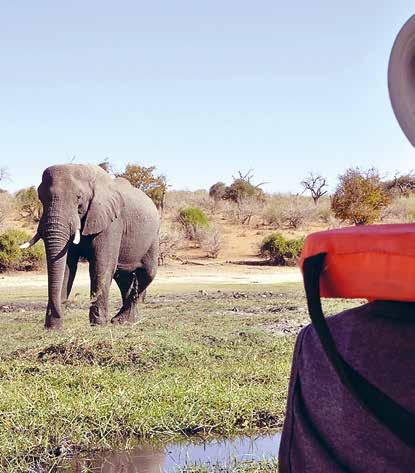 Graeme Green Journalist, photographer, and editor @graeme.green
Graeme Green Journalist, photographer, and editor @graeme.green
“Visiting these places, and other parks, reserves and conservancies across Africa, helps support wildlife conservation and the local people who live nearby.”Above Watching elephants in Botswana (picture taken by David Short) Bottom left A mountain gorilla in Uganda
doing something we don’t understand!” he said. “That’s when I have to draw on my knowledge of wildlife, and the seasons, to make an educated guess. Perhaps it’s a giraffe breaking down a termite mound to get nutrients. It happens at least once a trip.”
My family has been in South Africa for seven generations and I’ve been taking people on tours for 20 years,” Graeme says when we grab a moment between guiding, cooking for his guests and doing all of the other hands-on tasks it takes to make an adventure here successful. “We get all different sorts of people, from those who have been on multiple safaris to guests that are experiencing it for the first time. It’s not fair to say I have a favourite, but I do love to see the enthusiasm of a first-timer. We are like kids in a candy store! Because a safari is on so many people’s bucketlists, when they finally get here, you can stop anywhere, even near the more common animals like impala, zebra or giraffes, and feel their joy. To me, those moments can be the best part of a trip. It’s an honour to share my knowledge of the wildlife with them and you can really feel their appreciation.”
Whether it’s seeking out the Big Five in the precious conservation area of Kruger National Park or exploring the rainforest at Robberg, Graeme says that the wonder has never worn off for him either. “I haven’t seen pangolins or aardvarks as you might only encounter them once or twice in your whole guiding career. I’m still waiting!” Even the animals he sees regularly teach him new things as he goes. “Animals do strange things, on every tour we’ll witness one
While his homeland is filled with many wonderful creatures, butterflies being his recent fascination, Graeme’s favourite comes as a surprise. Is it a mighty lion? The noble elephant? “People ask this often and when I give my answer, they look at me as though I’m strange… It’s zebra! Why? They’re just so funky! They’re like horses wearing pyjamas! Zebras are so caring towards each other too. They lie in rows, with one resting its head on the next one’s rump. You know they’re best buddies and there’s something so endearing about that!”
As well as wildlife, Graeme takes pride in sharing his country’s culture, from touring the Zulu battlefields to giving them a taste of its past influences with a well-cooked South African Malay curry.
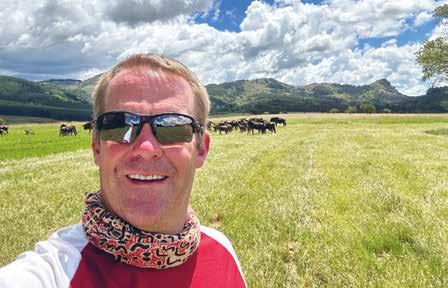
As busy as his adventures get, he never takes it for granted. “My job is many people’s dream holiday, that they might only do once in their lifetime,” he says. “I absolutely love it, I can’t imagine doing anything else.”
We honour our top leaders each year in the Explore Leader Awards. The awards recognise hard work, passion and a dedication to your holiday’s success. Have you had an outstanding tour leader on an Explore tour? Nominate them here exploreworldwide.co.nz/leader-awards
The knowledge and experience of our Explore leaders make for extra special adventures.
Guide, historian, naturalist and cook Graeme Anderson does it all on our adventures to South Africa and Eswatini. He’s led countless tours over 20 years, yet nature always finds a way to surprise him.
“ We are like kids in a candy store!”Our Tour leader Graeme Anderson
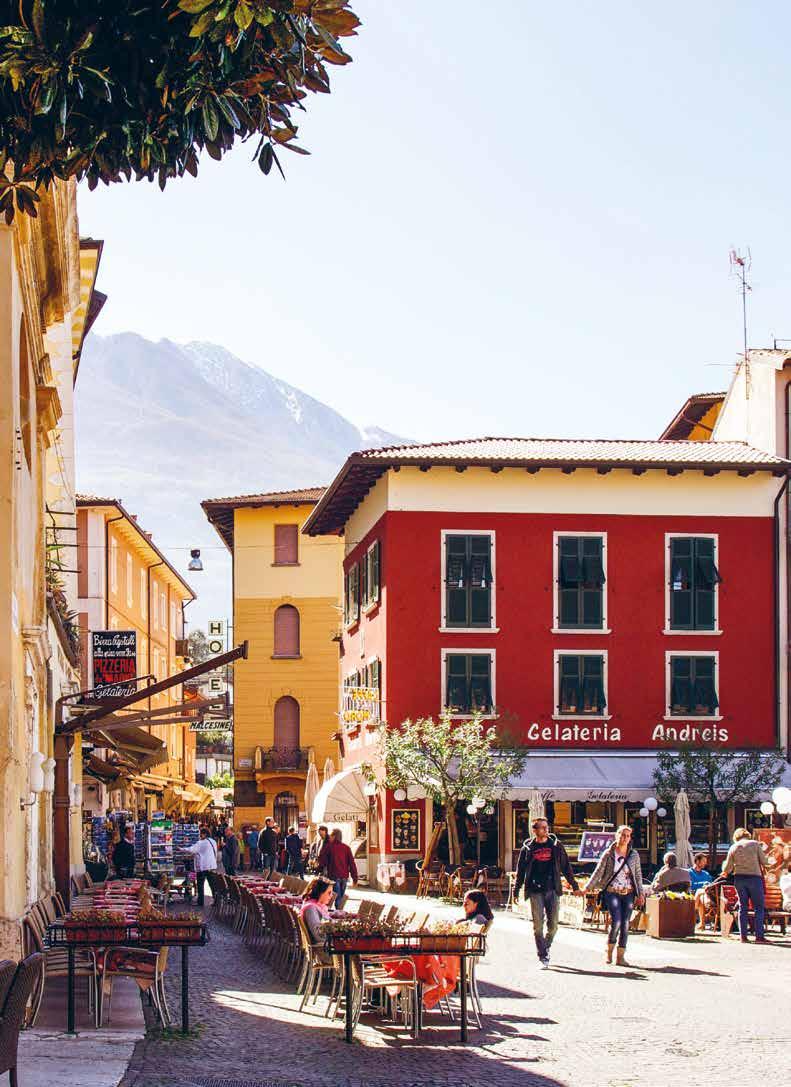
Fibonacci was onto something. The 12th-century Italian mathematician, whose eponymous ‘spiral’ or ‘golden ratio’ can be uncovered in countless Old Masters artworks and classical architecture knew the power of geometry. The Fibonacci sequence – also known as the rule of thirds – traces a pleasing spiral over a rectangle made up of squares of diminishing size.
Without getting too mathsy about it, the square is solid. A foundation. It’s why, over millennia, it’s emerged as the clear geometric winner in civic planning. Beyond geographic convenience, city and town squares uniquely provide both security and possibility – four connected sides open to the skies. Order against chaos and the freedom for communities to be themselves.
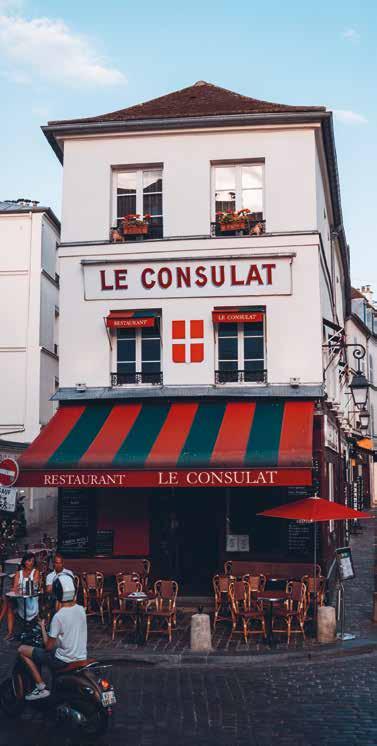
Travellers are drawn to squares. They’re full of history, politics, business, food, art, music, people. You can get lost in them, feel at home in them. In Calgary, Canada, where I grew up, squares weren’t really a thing. They should have been in a typical 20th-century North American city – the grid system of street planning had plenty of space for them. It was a city composed almost entirely of squares. But none of them was left free of development.
Instead, books and films brought me the romance of the squares, the fountains, the grand public spaces that were lacking in my home city. I longed to run across Trafalgar Square, scattering pigeons in my wake. To splash through a coin drenched Trevi Fountain. To sip espresso on Piazza San Marco after stepping off a gondola. To become achingly arty in Washington Square Park or suddenly sophisticated in the shadow of the Louvre.
Landmark central or out of the way, palatial or petite, public plazas are magnets for travellers.
Kitty Finstad considers the allure of urban planning’s most enduring shape: the square.
When I eventually made it to Paris in my late twenties, it wasn’t the grandiose Place Vendôme or the must-visit tourist-magnet Cour du Louvre that made the most lasting impression. It was a tiny neighbourhood square lined with trees, benches, cafés and restaurants. Like all the best discoveries, finding Place du Marché Ste-Catherine was a happy accident. After hours of wandering the Marais district, a little tired, hungry and disorientated (this was long before Google Maps), I found myself pulled towards an increasingly visceral hum of chatter, laughter and clinking cutlery one sultry June evening.
On my own and a little unsure, I did a few recce laps around the perimeter. There were families out for an evening stroll. Couples and friends meeting up for meals. Students hanging out and smoking (it was the 90s). Waiters weaving in between tables delivering drinks and plates. A handsome guitarist strumming away on a bench. This was the place. My place. My square.
No awkward ‘table for one’ status. I savoured and drew out my meal, equally nourished by everything happening around me. The dreamy guitarist moved on and a saxophonist moved in. An elderly couple twirled each other round the cobbles. A cat nuzzled my ankles. Between the mother and daughter at the table next to me, an argument erupted, peaked and resolved in 60 seconds. All of life seemed to be happening here, and I realised that the grand-dame squares of my film-inspired fantasies had some serious petite-soeur contenders. I felt at home. I felt excited. I went back the next day. And the next.
Since that magical, memorable evening, I’ve returned to Place du Marché Ste-Catherine with every visit to Paris. And I’ve made it my personal mission to uncover as many of its little sisters wherever I travel. In France it’s easy –centuries of market culture demands an at-least-weekly
Page 26
Outdoor seating and gelaterias – Italians are masters at making the most out of a square

Page 27
Watch Paris wake up, while sipping on a fresh coffee and eating a croissant
Below left
A couple in a bistro in Paris
Below right
Musical entertainment in Lisbon
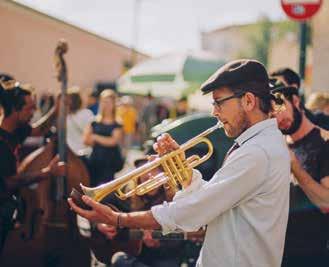
Opposite Parisian squares, like this one in Montmartre, are some of the best for people-watching
sanctioned place for farmers, traiteurs and vendors of comestibles and household basics to sell their goods and serve local communities.
In the almost impossibly pretty town of Saint-Rémy-deProvence, I knew the weekly market patch would be a must. One sweltering Wednesday in July, dodging the sunhats and shopping baskets of locals and visitors, I immersed myself in olives – thousands of them. Black, green, violet. Made into soaps and oils and olive-wood everything. Butchers, patissiers, acres of spices and herbs – all the herbes de Provence you can shake a sprig of rosemary at. Locals haggling with vendors. Tourists mooning over bunches of lavender. I sampled some fiery, paprika-ish piment d’espelette. Not a strictly local Provençal spice but the locals use it in their cooking. And now so do I. The market has become a tourist highlight in its own right, but this not-quite-square square conurbation of streets around Avenue de la Résistance to me seemed to be the centre of town life.
Indeed, squares of all ilks make my heart go bang for the same reason. But if my relationship with the plazas of Europe have been intimate, sensory, evocative (provocative on occasion), my experience with city squares further afield have taken a different turn.
“Squares uniquely provide both security and possibility”
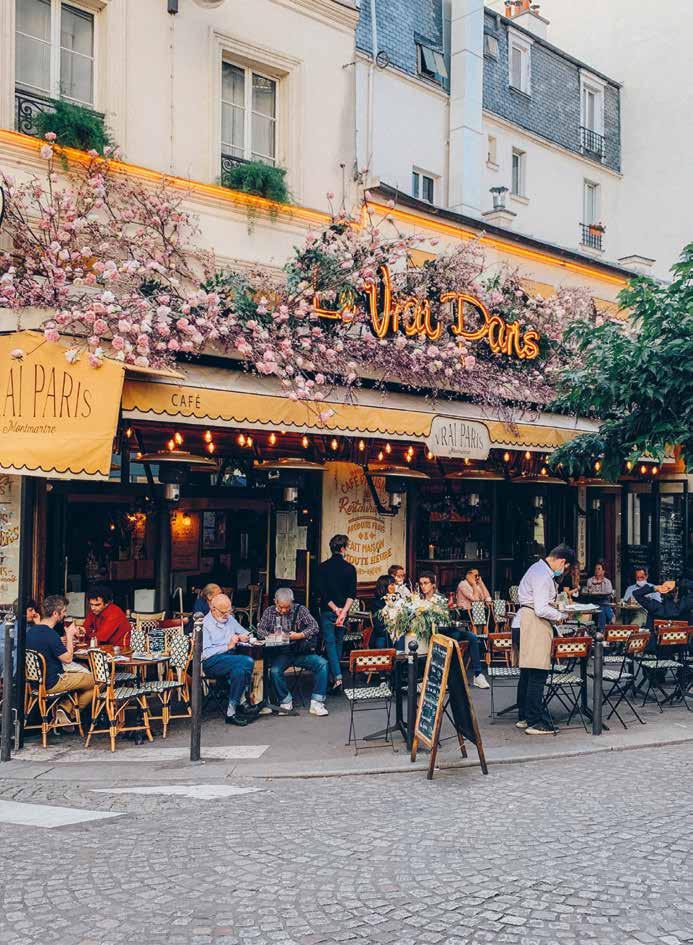
On a trip to Costa Rica, my hotel’s proximity to San José’s Plaza de la Cultura was a lifeline, a comfort. Unfamiliar with the country and a trepidatious solo traveller at the time, I felt reassured by the wide-open slab of a square, unremarkable but pivotal, solid with architectural history. It felt safe, bustling with locals, tourists, street performers and crazy pigeons putting on their own entertainment. An easy walk to the delightful National Theatre, the infamous Pre-Columbian Gold Museum, and the pedestrianised Avenida Central boulevard. Knowing the locals would turn up every day to try to convince me to join their walking tour, getting to know fellow travellers, finding the best café for the early morning sun (Alma de Café) and the best bar for watching the sunsets with a sundowner (top floor of the Gran Hotel), this square gave me the stability to explore. It wasn’t a beauty. But somehow it was on my side.
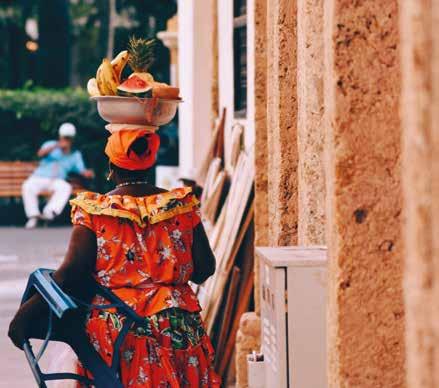
Likewise, a lively night market –a square shape of interconnected streets – in Siem Reap, Cambodia, felt thrillingly ‘foreign’ and comfortingly familiar. All the heavenly-smelling street-food stalls were like a bigger, more exotic version of London’s Maltby Street Market. Flooded with friendly locals, families, tourists visiting buzzy bars, letting their noses and appetites guide them to their favourite grills, this market felt like a city in itself, abuzz with the rhythm of the night. Filled with smokey lort cha noodles, I made a leisurely clockwise tour around all four busy lanes. The third of which was partly taken up with what looked like a local dance class, movers of all ages shaking their tail feathers. Unlike the traditional Apsara
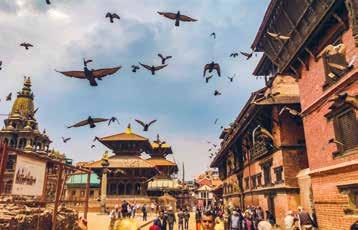
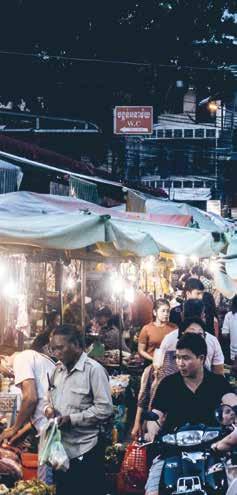
“There were families out for an evening stroll. Couples and friends meeting up for meals. Students hanging out and smoking (it was the 90s). Waiters weaving in between tables delivering drinks and plates. A handsome guitarist strumming away on a bench.”
dancers, whose elaborate costumes and elegant coordinated routines are a staple of Cambodian culture, these folks were just casually busting a move amongst the clothing vendors. I later learned this wasn’t a dance class at all, just a regular outdoor social scene set to music. Here was another square that wasn’t really a square, but with all the life and culture and excitement and continuity contained within one.
Of course the biggest and best-known squares will always get a look-in: I wouldn’t dream of skipping Plaça Reial or Plaza Mayor next time I’m in Barcelona or Madrid. San Francisco’s Union Square has a piece of my heart. Cape Town is next on my travel bucketlist, and so is Greenmarket Square. And I have it on good authority that the ice-cream stand in Pollença’s main square is worth the airfare alone.
Until then, you’ll find me searching for my next Fibonacci-worthy little sister. A square that’s as old as the square.
Kitty Finstad Travel, food and drink writer thegoodvikings.com
CARTAGENA, COLOMBIA
Plaza de la Trinidad
A laid-back, welcoming square in the heart of the ancient city’s arty quarter. Full of bars, restaurants, music and popular with students and locals, families and visitors. You can even join a free Zumba class here every Sunday evening. A Colombian carnival of colour.
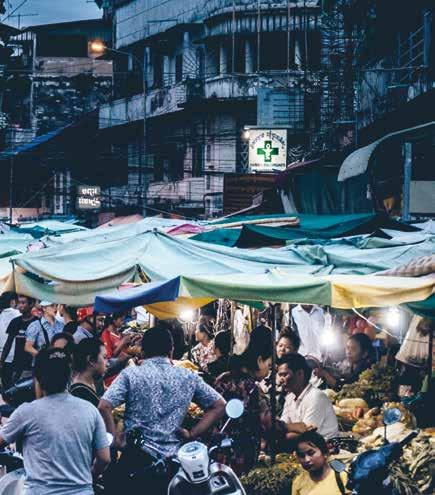
HAVANA, CUBA
Plaza de Armas
Not exactly the smallest or most secret square in the Cuban capital, Plaza de Armas trumps the showier Plaza de la Revolución for pure charm. Lined with booksellers and colonnaded colonial buildings, it’s the city’s oldest square, and probably its greenest. Filled with lush palms and native plants, it’s a birdsong-rich urban oasis.
KOTOR, MONTENEGRO
Pjaca od Dvar (Wood Plaza)
This quiet fountained space a few hundred metres from the Old Town Square – a UNESCO World Heritage Site – feels like a bit of a secret. Just off the Northern Gate, it’s the perfect, serene spot for a coffee, a rest and bit of cat communion – it’s a magnet for the town’s feline population. And so quiet you can almost hear the square’s VIP residents purring for their supper.
KRAKOW, POLAND
Maly Rynek (Little Market Square)
Krakow is tiny, and visitors will likely hit every one of its city squares on a walking tour. The most charming though is Maly Rynek aka Little Market Square. Quiet, colourful and grand at the same time. Easy to fall in love with.
ROME, ITALY
Piazza di Santa Maria
When in Rome, one must of course cruise past the Trevi Fountain for a baroque eyeful – if you can push past the crowds. But for the real beating heart of this city of cities, cross the river Tiber into the Trastevere quarter and let the heat from the sun-baked cobbles warm you into the shank end of the day, when this neighbourhood square comes alive around a pretty central stepped fountain against the backdrop of the Basilica Santa Maria and its looming tower. Restaurants stay busy well after dusk as people of all the ages stroll past on their evening passeggiata
The best-kept secret, where Eastern Europe meets Western Asia.
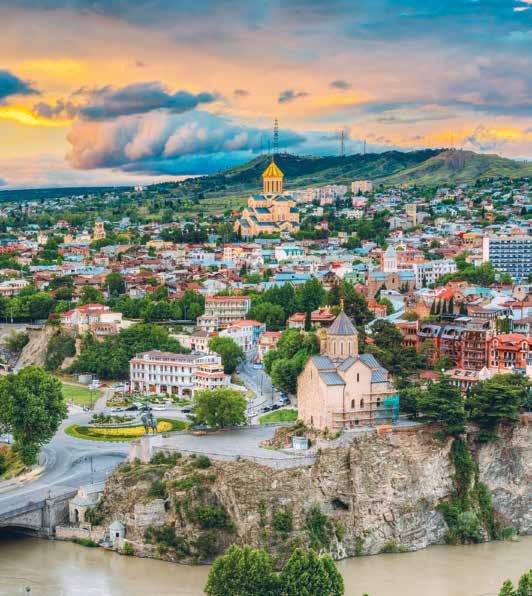
What do you know about Georgia? No, not the 4th state of the United States Georgia – the other one! The one that is staggeringly diverse. A mix of mountains, monasteries, and museums; of warmth, wine, and welcoming people. Here’s all you need to know in a nutshell.
The small mountainous country of Georgia is uniquely situated where Europe meets Asia. Although geographically classed as Asia, historically, socially, and culturally Georgia has much closer ties with Europe. In under a decade, the country has gone from being almost totally off the tourist radar to the most visited country in the South Caucasus. And it’s not hard to see why. Whether you’re looking to hike through stunning mountain scenery, visit historic cave towns and monasteries, or explore cosmopolitan cities, Georgia has it all.
5 must-see Georgian highlights:
1
Tbilisi
A fantastic starting point for any trip to Georgia, Tbilisi is Georgia’s capital city, and a real melting pot of old and new. Discover ornate synagogues, 18th-century mosques, Georgia’s oldest basilica, medieval Armenian churches and a Zoroastrian Fire-Worshipper’s temple. For something more contemporary, head to the waveshaped Peace Bridge that stretches across the Kura River, connecting Old Tbilisi with the city’s more modern districts. After a busy day of sightseeing, wander through quaint narrow streets and faded 19th-century wooden buildings, and kick back in a quirky street-side cafe while observing the bustle of local life. For a glimpse into modern Georgian life, visit the Marjanishvili district in Tbilisi with plentiful wine bars, restaurants and colourful street art.
2 3

You’ll find emerald-green alpine meadows and towering snow-capped mountains in the Kazbegi region of Georgia. Spanning over 8,700 hectares on the northern slopes of the Caucasus ranges, Kazbegi National Park is home to a variety of flora and fauna. You may also spot a pack of roaming wolves or a solitary bear foraging for food amongst the jagged peaks. Don your walking boots and trek along the dusty mountain paths to the dizzy heights of Gergeti village and make a pilgrimage to the Church of the Holy Trinity set upon a blanket of green in a natural amphitheatre of craggy mountains. Cloaked in mythology and religious tradition, Mount Kazbegi is the place where the Greek Titan Prometheus was chained for all eternity, and ancient Abrahamic relics are said to have been discovered here.
Step back in time and head to the Silk Road cave town of Uplistsikhe on the banks of the Mtkvari River to uncover an entire town of streets, churches, palaces and homes carved into the mountainside. Dating back to the first millennium BC, the town became a prominent city on the trade route of Byzantium with India and China and age-old relics from the Bronze and Middle Ages have been discovered here. Walk through vaulted chambers chiselled into the ivory-coloured rock, peer into hollow caverns that once housed the sacred shrines of religious ceremonies and sit on the cascading tiers of a timeworn amphitheatre.
Left4 5
Sighnaghi
Set upon a verdant hilltop in the Kakheti region, the pretty town of Sighnaghi, also known as the ‘Paris of Georgia’, boasts far-reaching views of the Khaketi Winelands against a dramatic backdrop of the towering Greater Caucasus mountain ranges. Stroll along the cobbled streets lined with 18thcentury dwellings, overhanging wooden balconies and terracotta tiled roofs, and visit a 16th-century wine cellar to sample some of the region’s delicious red and white wines that have been produced here for over 300 years.
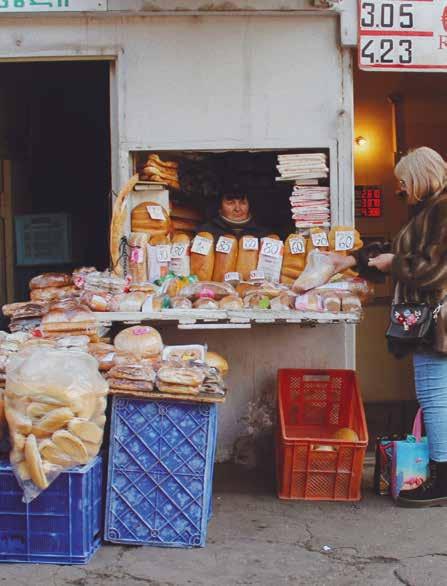
Svaneti

Get off the beaten track with a trek into Georgia’s Svaneti region. Set amongst the snow-capped peaks and deep gorges of the Greater Caucasus Mountains, indigenous communities reside in its remote villages. Medieval stone towers known as koshki are dotted within the verdant landscape, and mighty glaciers slide down the valleys toward the inky-blue lakes and rivers. Stay in the village of Becho in the dominating shadow of Mount Ushba known as the ‘Matterhorn of the Caucasus,’ and meet the local Svan people to learn about their unique culture and age-old traditions.
Top tip from Vale Chironna, Explore’s Product Manager for Georgia...
“Make sure you eat plenty of Khinkali dumplings, but remember to never eat the doughy knot on top! They’re the chewiest part and it’s a way to count how many each person around the table has eaten – there’s always far too many knots to count on my plate when I visit!”
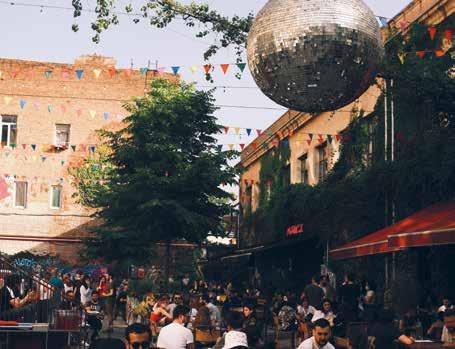
The book to read:
Ali & Nino by Kurban Said Georgia’s version of Romeo and Juliet and very much a celebrated classic.
The film to watch: Chemi Bednieri Ojakhi (My Happy Family) Hop on Netflix and watch this enthralling movie showcasing parts of Georgian society.
The music to try: Mgzavrebi
A Georgian folk/rock band made up of 7 musicians, Mgzavrebi’s songs will take you on a musical journey.
In Georgia, guests are believed to be a ‘gift from God’. When attending a supra (a traditional Georgian feast) you’ll be welcomed joyously and a tamade (a toastmaster) will look after you and make sure you are always entertained and provided with food and drink. Want to join in? Raise a glass and say “Gaumarjos!” (cheers).
Georgia is fast becoming a foodie destination, with a focus on locally produced ingredients, hearty dishes and cheese (lots of it!). The so-called ‘national dish’ of Georgia, khachapuri is the perfect winter warmer. This traditional leavened bread is canoe-like in shape, with gooey melted sulgani cheese baked into the middle, then topped with chunks of butter and an egg cracked onto the top. It’s ubiquitous across Georgia and can be found at most hole-in-the-wall bakeries and restaurants. Each region has its own twist with vegetables or different meats, so you’ll just have to try them all!
Making the Georgian soup dumpling khinkali is an art form – experienced cooks will tell you that any fewer than 20 folds is the work of an amateur – but when faced with a plate piled with these slippery, meat-broth-filled parcels you’ll find yourself too distracted by the delicious aromas to count them. Eating khinkali has a specific set of rules too: they’re finger foods, with the little knot at the top used for lifting them. You then bite a hole in the side to slurp out the soup before eating the rest of the dumpling, discarding the knot.
Above The national dish
Churchkhela look like sausages but are in fact colourful sweets made from walnuts with concentrated grape juice left over from the annual wine harvest. Each layer is left to dry until the whole strand is enveloped in a dry, waxy crust – tastier than it sounds. You’ll see churchkhela for sale everywhere on the side of the road and they’re considered a staple of Georgian cuisine, even being taken to war by Georgian soldiers as a boost of protein (and sugar).
Georgia is considered the birthplace of wine. Kakheti is Georgia’s most well-regarded wine region and one of the oldest in the world. With many natural springs and mineral-rich water from the Caucasian Mountains, as well as warm summers and mild winters, Georgia’s climate is ideal for wine production. Head to Kondoli to learn about the organic farming methods used to harvest special bio wines. Georgia also has a unique wine-making process that involves storing pressed grape juice underground in large qvevris pots (egg-shaped clay caskets) while it ferments. The story goes that 8,000 years ago some lucky soul poured grape juice in an earthenware jar and buried it in a pit which resulted in Georgia’s first glass of red.
You’ll find all our tours to Georgia at exploreworldwide.co.nz/Georgia
khachapuri Left Square life in Georgia Destination Guide 35 exploreworldwide.co.nz


Explore Product Manager and keen photographer, Chris Ellis, shares his top 5 tips for taking the ultimate travel photos.

Photography in its simplest form is capturing light. The trickiest part of photography is capturing that light successfully and getting across the story you’re trying to tell. It’s often easiest to shoot when the sun is behind you, but using side-light can really make your subject ‘pop’ and create some dramatic effects. If you want to put your skill to the test (or just have fun experimenting), try back-lighting your subjects to create silhouettes or give them an ethereal glow.
It’s not just angles to bear in mind with light, but also the timing. Shooting in the harsh midday sun creates high contrasts, so it’s best to seek out the ‘golden hours’ around sunrise and sunset. Get up early and you’ll not only beat the crowds, but you’ll be rewarded with beautiful soft light or stick around till sunset and capture the changes in a scene as light is cast in amazing technicolour.
Taking the time to learn a few words in the local language will go a long way. Not only is it polite to speak to someone and ask their permission before you take their photo, it also puts your subject at ease, leading to a more natural shot. You don’t want to alienate anybody so take the time to have a quick chat and it’ll make the whole experience more enriching. The best photos are those with a story to accompany them.
Left Hindu New Year celebrations in IndiaBefore heading anywhere new it’s a great idea to research the places you’re going to, and the type of photos taken there. Check social media, blogs and photo journals to get a feel for the sort of photography available and the images that already exist.
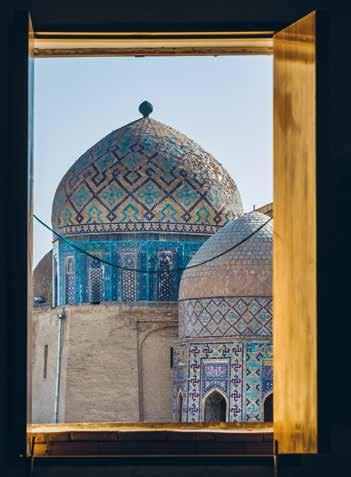

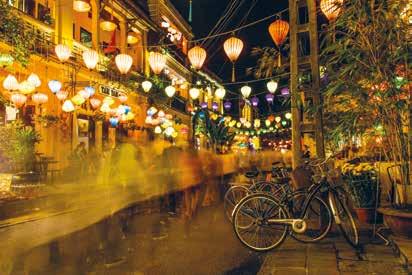
Don’t copy, but get an idea of what to expect at each location – if it’s immediately recognisable you can set out to approach it in a different way. Look for a different angle, experiment with different compositions or play with the light. Seek inspiration through other photographers, and then apply your own creativity and flair.
Take the time to learn your way around your camera’s buttons and features before you go. There’s nothing worse than a perfect photo opportunity being missed because your camera is on a strange setting. Take a little time to experiment with the settings and get familiar with your kit, and pay particular attention to the default functions for quick shots – you’ll save yourself a lot of heartache.
It’s also a good idea to bring spare batteries and memory cards and make sure you re-charge and back-up your photos daily.
Sit down. Observe. Soak up the scene. Chat to the locals. Get a feel for the atmosphere. Then, pick up your camera. It’s easy to turn up and start snapping away at the obvious point of interest, but just taking five minutes to get a feel for the scene and the environment will yield far better shots. You’ll notice interesting little details, and pick up interesting stories from locals or discover a quirky angle. Sometimes, you just have to wait for the opportunity to present itself. But when it does you’ll know it, and by taking your time and being prepared you’ll come away with some killer shots.
Being able to adapt your photography to suit the places you visit is an important skill. The Northern Lights are particularly tricky to capture, here are some tips and tricks from us about how to do it best at exploreworldwide.co.nz/ photograph-northern-lights
Share your travel stories...
If you’ve travelled with Explore and have a story you would like to share, we would love to hear from you! Send us your story on mystory@explore.co.nz
‘Both my mum and I are adventurous, care a lot about the environment, and love animals, so Costa Rica seemed like the perfect destination for a trip together. The tour was amazing from start to finish. Everyone in the group got on really well and our guide Alex was great! Exploring the untouched cloud forest in depth and completely disconnecting from the modern world was amazing. Flying through the forest treetops on the zip lines was also such a magical experience! A feeling I’ll never forget. The entire trip is definitely one I’ll treasure and remember forever.’
Taken from Becca talking about her ‘Highlights of Costa Rica’ tour that she did with her mum Ann.
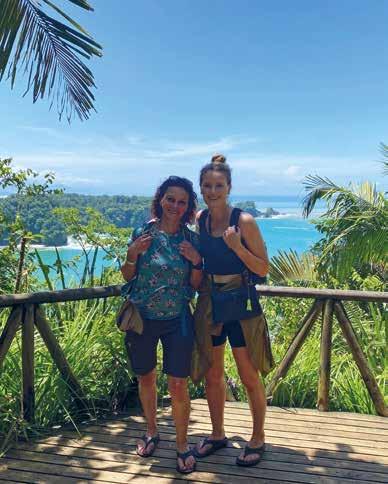
We loved receiving the group photo (above) from Brian and hearing how he has supported one of our tour leaders who was forced to flee Myanmar. Brian has travelled with Explore countless times and said…
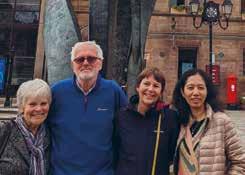
‘In the photo are myself and a friend with whom I’ve done four Explore trips. We’re joined by Zsar Zsar who was our guide in Myanmar, she escaped from the country and is now studying in Chester. The other lady is Celia who I met on an Explore trip to Ecuador and who lives in Chester. I arranged for Celia and Zsar Zsar to meet and they are now the best of friends… the magic of Explore!!’
‘I’ve just returned from a brilliant week on the Amalfi Coast, thanks to Explore and our wonderful guide Enzo. I travelled there on my own but I left with 15 new friends! A week of beautiful walks, delicious locally produced food and the opportunity to visit iconic places. Visiting Pompeii, Herculaneum, Positano, Capri and Amalfi was a like a dream come true! My top highlight was walking through the forest to Amalfi. I learnt a new phrase – forest bathing. It means to walk in a natural environment and consciously connect with what’s around you. It felt so healthy and invigorating.’
Julie talking about her recent ‘Amalfi Coast Walking’ trip.
We know our trips are special, but don’t just take our word for it. Explore adventurers are our best ambassadors.Above Becca and Ann in Costa Rica Top right
“Superb area, great guiding and the family run hotel and trip leader couldn’t do enough to ensure a great trip. The Picos Mountains are an exceptional part of Europe.”
